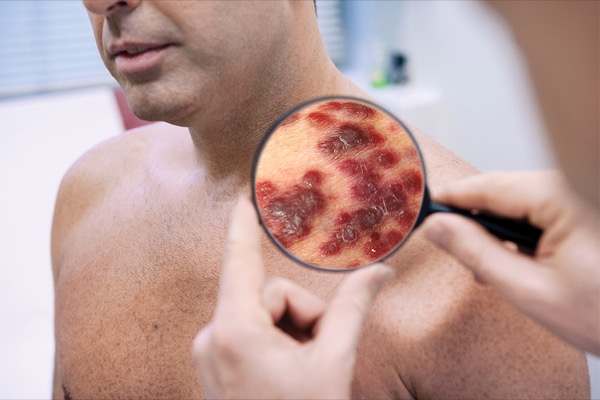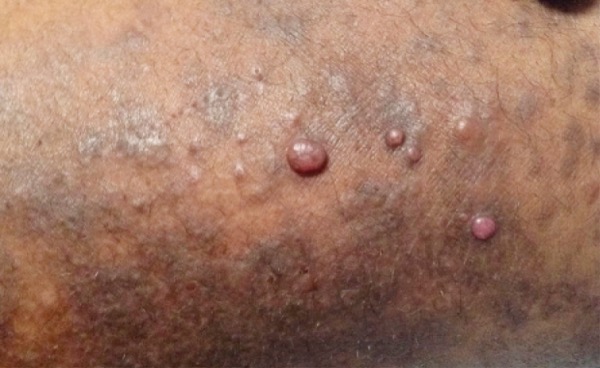A new subtype of Kaposi sarcoma (KS) has been described among men who have sex with men (MSM) who do not have HIV (Arch Dermatol Res 2023 Mar 1. doi:10.1007/s00403-023-02552-2).
KS has long been on dermatologists’ radar as an AIDS-defining disease, and it is seen among HIV-negative people, mostly among older men of Mediterranean descent, but it is rare in the United States. KS, a vascular malignancy, has been linked to human herpesvirus-8. There are four established subtypes, which are designated according to risk factors, presentation and disease course, according to the paper.
In the HIV-negative arm of this retrospective study, six in 19 patients (<30%) fit into an unclassified KS type, defined as healthy, middle-aged, MSM without HIV who had lower extremity lesions.
“Dermatologists or other healthcare professionals should keep in mind when they’re evaluating people that just because they’re HIV-negative doesn’t mean that they don’t have Kaposi sarcoma. If a patient presenting with KS symptoms is elderly, immunosuppressed or identifies as MSM, doctors should investigate,” said Karissa Libson, the lead study author, and a third-year medical student at the College of Medicine at The Ohio State University, in Columbus.
“Although the virus that causes KS can be transmitted during sexual activity, the manner of transmission in the emerging subtype is unknown. One hypothesis is that there’s a higher seroprevalence of the herpesvirus that causes KS in MSM. By virtue of there being more people who are positive for the herpesvirus in that population, they might have a higher chance of developing the disease, even if they don’t have HIV,” Ms. Libson explained.
The study included 91 patients with KS; 72 had HIV and 19 did not. The patients were examined between 2005 and 2022 at the university medical center. All patients were older than 18 years of age. Black patients were overrepresented in both the arm with HIV (25%) and arm without HIV (26%) of the study. Patients with HIV experienced a higher frequency of lesions located on the trunk (43%), head and neck (35%), and oral mucosa (29%) than patients without HIV. Although only 3.4% of Ohio’s population is estimated to identify as MSM, 74% of those seen in AIDS-KS subtype and 67% seen in the unclassified KS type identified as MSM.
Patients with HIV were treated with antiretroviral therapy (ART) (68%) and chemotherapy (51%). Patients without HIV were treated with chemotherapy (42%) and surgical excision (37%). Resolution or remission was achieved in 60% of patients with HIV and 47% of patients without.
The difference in KS resolution between [people with HIV]and HIV-negative patients was described as “not meaningful,” and “an unexpected finding considering AIDS-KS is typically more ‘aggressive’ than other forms of KS,” said study co-author John Trinidad, MD, a clinical faculty member in the Department of Dermatology at Massachusetts General Hospital, in Boston.
“This may be owed to the advent of ART and that patients who gain control of their viral load and CD4 counts after [HIV] diagnosis may have more indolent disease,” Dr. Trinidad explained.
“The study’s major limitation is that it was an observational study with a relatively low number of participants that came from one area. The study did not compare different KS treatments either. Although this new subtype is clearly identified, larger more robust studies are needed so that doctors can do statistical analysis of the data,” said Paul Volberding, MD, a professor emeritus of infectious diseases at the University of California, San Francisco, who was not associated with the study.
Ms. Libson also acknowledged the limitations of the research due to the study’s small sample size and noted, “patients’ charts did not clearly indicate how advanced their KS was. Future research should include this information to help us draw more robust conclusions.”
The sources reported no relevant financial disclosures.
This article is from the May 2023 print issue.











